Perhaps the only thing static in the changing world of fashion is change itself. History proves that fashion has always reflected the taste of the rich, elite and royals. With every change in the rule of a monarch there always has been a considerable amount of change in fashion. After the advent of King Edward VII to the English throne the fashion of the Victorian era was waved farewell and a new trend known as the Edwardian Fashion came into existence.
The Edwardian era brought about a new life in the fashion of United Kingdom. Victorian fashion was a more of formal code of dressing and preferred more of darker shades and complex designs. However, Edwardian fashion brought fresh ideology to the scenario. It was much required change and the masses accepted it with all their heart.
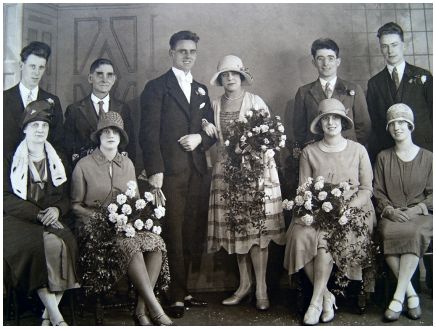
The Edwardian era Fashion saw the decline of dark colours and the introduction of bright shades of lighter colours. Be it clothes or wallpapers everything was coloured in light shades. The introduction of floral patterns was another unique addition to the Edwardian era Fashion.
Women’s fashion saw the demise of the bustle and the introduction of longer sleeves. The heavy corsets of the Victorian era were modified into health corsets of the Edwardian era. Dresses became better fits and tight fitting skirts and jackets were the new trends. Hips became curvier and chests fuller with the introduction of the pigeon breast shape.
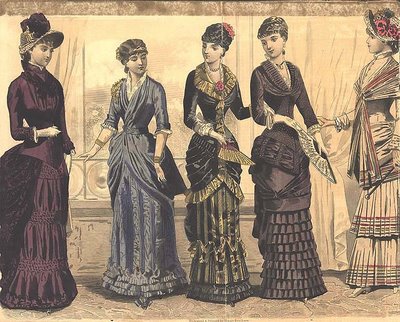
Puffed chests and narrow waists which sloped from the back to the front became new favourites. Skirts became longer often brushing the floor and followed by a train. Somewhat like a mans shirt with high collars the shirtwaist became a uniform for the working women.
New belts and hats were often accompanied with the Edwardian dresses. Ankle length skirts were introduced in the last part of the Edwardian era and came on to become an all time favourite amongst women.
Edwardian men were nowhere behind in dressing themselves according to the latest fashion. Three piece suits which composed of a sack coat with matching waist coat and trousers were tried with contradicting colour combinations. Waistcoats became higher on the chest and trousers shortened in length and were often accompanied by turn ups or cuffs.
Blazers and Norfolk jackets was preferred for outdoor activities. Winter called for knee or calf length overcoats. Neckties were narrower and bowties were the more preferred ones for formal dressing. Top hats remained the formal wear for the upper class. Childrens dresses in this period were almost exact imitations of womens and mens dresses.
Edwardian parasols, umbrellas
Parasols were made for the first time in East Indies. That was about five thousand years ago. Around 100 BC, parasols spread to ancient Rome and also to Greece. The parasols got introduced to Europe much later, during 1500s. This happened after the Italian renaissance. Parasols were very popular in the French court.
It became a part of the style of women to carry parasols. They were as important to women as their gowns. Therefore, you can well imagine how conscious women about their parasols were.
The Edwardian times were the times of sophistication. King Edward who started ruling England from 1901 to 1910 was a very sophisticated man himself. A lot of importance was given to art, fashion and things of beauty. The upper class men and women of England became very fashion conscious during the times. Parasols were a very important accessory carried by women.
Several beautiful parasols were designed during the Edwardian times. The Edwardian parasols were exquisite pieces of beauty.
The Edwardian parasols were symbolic of class. A woman carrying a parasol meant that she belonged to the upper class. She was a perfect lady, prim and proper. She did not have to toil for living, unlike several common people of the times. The Edwardian parasols were as important a part of a womans attire as her gown, her stockings, and her shoes.
A well to do woman of the Edwardian times has a number of Edwardian parasols. She carried each one that matched the dress that she wore. They looked beautiful as the parasols complimented the look beautifully.
Parasols were not only a fashion accessory. They served a purpose too. They used to protect the women from the heat of the sun. The Edwardian society was particularly concerned about beauty. Fair flawless complexion was an obsession of the times.
The Edwardian parasols mainly were made up of the 3 colors: white, paste shades and ivory. Parasols are again coming back in fashion. This is because they guard the skin from the harmful rays of the sun. Unlike the Edwardian parasols, the modern ones are jet black.
Edwardian era laces
The touch of the Edwardian era persists at least in terms of craft most prominently in the field of jewelry designs.
Even today the world craves for more of the feminine motif designs that steal hearts as easily as they did over a century ago. The same goes for furniture as there is a great demand for the style of products in the furniture market which has an Edwardian touch to it. The same being seen in the release of a whole range of modern furniture called the Edwardian Range which includes wonderfully designed cabinets and vanity.
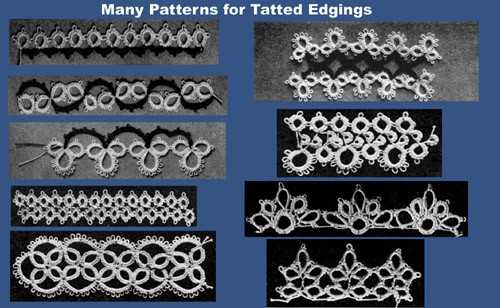
If after craft the Edwardian touch lasted in any other field the most then it has to be the world of fashion. Even today there is a demand for Edwardian gowns and dresses. In fact there are bridal dresses that are made on the lines of gowns of the Edwardian years as well.
A very common item used in Edwardian clothing was lace. Even though lace as a material hasnt really caught on as it did during the Edwardian era, innovative uses of lace have revived the demand to a certain respect.
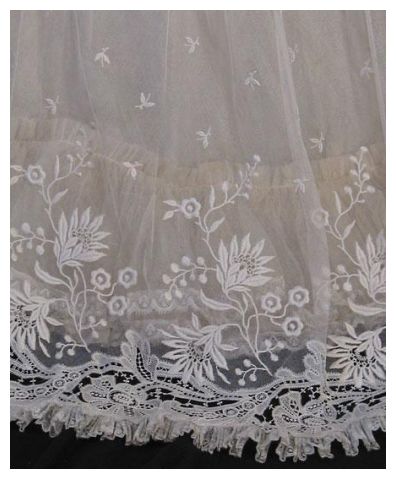
The most innovative use of lace in recent times has been the use of it on purses to draw an Edwardian design. The Edwardian lace purses have been in some demand recently and newer designs of Edwardian standards continue to impress modern women. Edwardian lace collars may have fizzled out in the late 50s however they have resurfaced as designs have erupted which innovative women have started wearing along with sweaters.
They wear it either as separate pieces or by attaching it to a woolen blouse or sweater. Edwardian Lace cuffs however are something men would rather wear to costume parties the bridal dresses of today somehow find a lot of Edwardian lace designs on them.
Often used in the dresses along with distinct patterns involving very small pearls, these bridal dresses have caught many an eye and many others attention. They are beginning to gain a lot of popularity and fast. Edwardian lace might not be the greatest thing to expect from the Edwardian era but it still has its takers.
Edwardian Era Fabrics
When it comes to style, Edwardian fabrics were the predecessors of the modern day fashion trends. The Edwardian period gave more importance to the mature woman with loose breasts and heavy waists. This was well reflected even in the dresses of that era.
While the sleeves of the Edwardian gown were fuller at the top and tighter around the wrists, the gown was a flowing silhouette. Pagoda sleeves were very popular. The fabric used to design these clothes therefore had to live up to the stylistic demands of the dresses.
Fabrics of the skirt determined its silhouette. The 1890s saw the use of stiff wools and silk taffetas in the making of petticoats and skirts. But by the Edwardian era, this gave way to a more fluid, softer fabric for suiting and silks.
The way the outermost petticoat was cut reflected the curvature of the skirt. Since softer fabrics were used, hence the color of these garments also had to become pale. Thus a range of delicate shades came into being.
They included the evocative names of ashes of roses and eau de Nile. But it should not be thought that bright colors went out of fashion completely. In fact, even today, some of the gorgeous Edwardian colors continue to thrive.
Soft clinging fabrics also led way to expensive lace and frills that always seemed to accompany the Edwardian lady. However these soft fabrics were no match for the bitter winter that followed. Hence it became inevitable to resort to tougher Edwardian fabrics.
Tailor-made costumes with formal bodice and skirts of walking length became popular under these circumstances. The tailor dress was favored by the haut ton as a formal daywear which was also very fashionable. Matching coats or jackets often accompanied these dresses which generally were composed of boned bodice and skirt.
However for practical purposes, women still preferred the use of the suit; which consisted of the jacket that had a matching skirt along with a contrasting blouse. The fabrics used for this dress were different from the softer fabrics of the initial dress.
The present dress reflected the spontaneity, sportiveness and fashion taste of the New Woman; who had developed by the late Victorian age.
In short, Edwardian fabrics corresponded with the changing tastes in fashion and trends of the age.
Edwardian Era Swimwear
Edwardian swimwear consisted of wool just like the Victorian one. But unlike the Victorian age, this age saw the use of bloomers as well as wool over dresses.
The Edwardian woman was clearly more modern as compared to her Victorian counterpart.
She had clearly come one step closer to achieving her independence as she now wore a sleeveless swimwear with laced footwear and black stockings. By 1920, the swimwear shortened more with plunging necklines and shorter over dresses.
The development of Edwardian swimwear is very significant as it closely reflects the changing attitudes people had not only towards women but also towards their coastlines.
Until about the nineteenth century, the British were not interested in their coastlines. It was simply a place of business interest; the halt from where other journeys could begin.
But by the late nineteenth century the attitude changed. A doctor called Richard Russell promoted the drinking of sea water as a definitive cure for all diseases right from gout to jaundice. As a result, the attitude towards coastlines changed.
Spas were built up near the coasts. People began to go to the coastlines for a day trip. Trains were more popular than coaches for this purpose. This brought about a new development in the British economy.
Edwardian swimming costumes gave a new level of confidence to women. While they were still covered from head to toe in their daywear, the swimming gear allowed them to freely express themselves. It was one place where they did not have to remain confined in the flesh tearing corsets aimed to achieve a perfect S figure.
This led to a rise in womens sexual expression that has continued until today with modern swimwear costumes like the bikini. In short, the Edwardian swimwear enabled women to interact more freely.
Edwardian Era Tea Gowns
When we think of ladies consuming tea late afternoon, we picture them dressed in white gowns sitting around the table and gossiping amongst themselves. The duchess of Bedford stated this tea drinking ritual in 1840 s. people took light meals along with their tea, mainly bread, butter, biscuits, cakes and tarts.
This habit of the duchess became a ritual at every house. This is why women put of tea gowns before they sat with their cups of tea. The tea gowns were attires which let the ladies breathe free. It was a comfortable dress and a contrast to the tight fitted robes of the day and of the night. The gown could be fastened easily on the female body. It was looked upon as an attire of seduction.
The Edwardian tea gown was an essential part of the wardrobe of women. Their wardrobe was not complete without the tea gowns. The Edwardian tea gowns were designed very intricately by the designers. They designed the gowns with great details. The velvet gowns and the satin ball dress were not created with so much of details.
The Edwardian tea gowns were a blend of comfort and style. Some women also wore just a loose cape made of chiffon on top of it and carried the tea gowns as evening wears. Some also wore them to dinner parties. The train of the Edwardian tea gowns was quite long. The sleeves were shorter in length. They were mainly worn during home dinner.
The gowns were, most of the times, collarless. The neck of the gown was v shaped.
The materials that made up these tea gowns were:
1. Soft silks
2. Satins
3. penne
4. chiffon velvets
The tea gowns of the later part of the Edwardian age were not two separate pieces of clothes, but one single piece of cloth. The Edwardian women often put on a loose tunic made of chiffon or silk.
The style of the tea gowns upholds the sophistication of women in the Edwardian society.
Edwardian Era Hats
The Edwardian fashion was highly influenced by Art Nouveau. This meant that skirts for women were long and swooping. In the same way, hats swirled and swooped on the heads too.
The Edwardian hats had huge and lavish edges. They were so bid that they used to give an illusionary impression that they were held up as if, by magic. Edwardian hats often were decorated with flowers, laces and ribbons. Sometimes, even plumage was used on the hats. Even lacy veils were fixed with hats. The hat overall looked like a frothy mass.
Here are some Popular Edwardian Hats
Merry window hat: this type of hat was 1st designed by Lucy for an opera. This type of hat always came in black. This type of hat always had chiffon designs on it. Sometimes even feathers were used for decorative purposes.
Black ascot hat: when King Edward died in the year 1910, a meeting was held at ascot. Men and women wore black hats that came to be known as black ascots.
Lingerie hats and versus hats: the trend of lingerie hats was started in the year 1904. These were meant to be worn on summer months. These were popular accessories with those who were fond of idling away during the summer afternoons. They wonderfully complimented white lingerie dresses.
During the Edwardian times, wearing white was symbolic of wealth. The color can easily be soil. It requires constant attention of the servants. In order to keep the white impeccable, servants had to wash them minutely for hours and hours. White dresses and white hats made the statement that the wearer could afford them.
Other types hats that were preferred by the Edwardian women were the tongue and there were some others too. Some women took part in sports like golf, bicycle riding etc. for them panamas, boaters, felt homburgs were perfect.
Hats were looked upon as a fashion accessory in the Edwardian times. They were decorated with various things like laces, feathers, branches, leaves, cherry branches, ribbons, streamers etc.
The turban style hats: hats were influenced by the turbans that the maharaja wore. These hats covered the major part of the hair. They lend an eastern touch to the entire look. In the later part of the Edwardian era, turban styled hats were a big craze amongst the people. They were very flamboyant in their look.
Edwardian Era Patterns
The ladies of the Edwardian times used to be fashionably dressed in gowns. The gowns were worn in parties and other social gatherings, even as casual evening dress. Most importantly, the wedding gown that a lady wore on her wedding day held a lot of significance.
The Edwardian patterns for dress were almost the same for women. However, there were subtly differences in style, fabric and in overall look of the gown. These variations depended on the designers. Let us take a closer look at the different pattern of dress that was available:
Lucy Chiristiana Gown Pattern
She was a well known designer of the Edwardian times. During her times, Lucy Christiana was probably the only one who created such high fashion from outside Paris. Her gowns had a romantic appeal to them. She designed tea party gowns, gowns that could be worn as evening wear.
She used a lot of pastel colors to make her clothes. There were several other works that adorned her dresses. Often silk flowers could be noticed on her work. The dresses that she designed brought out the innocence as well as female sexuality beautifully. Her designs were so upbeat that they were popular with the women up until the 20s.
The Gibson Girl Pattern
The creator of this pattern was Charles Dana Gibson. These were mainly for young women with beautiful, curvy figures. The swan bill corset that was created by Gibson helped ladies get the S shaped body. The women held their neck high so that it looked longer and thinner. The hair was arranged, piled and fixed on top.
This pattern of dressing was sensuous but it was expensive as well. It was meant for the elite females. This fashion soon died out.
Lace was an important material that was used to create the gown patterns. Several designs used to be created using laces. These design patterns adorned the entire gowns and beautified them.
Tight bodices were worn on top followed by long skirts. The sleeves were till elbow. Initially the dresses that were made had big collars. However, these were uncomfortable and difficult to bear. So in course of time the collars reduced. Short collared dresses were easy to wear and were much more comfortable and gave the woman room to breathe.
The wedding gowns that were created were also beautiful pieces of clothes.
Edwardian Era Aprons
Edwardian aprons have been esteemed as some of the best fashion statements of all times. If you are looking for more information on Edwardian aprons, you have come to the right place.
These designs were mostly inspired by a pattern which was used between 1910 and 1912. These aprons had a full bodice design that kept the whole clothing protected.
The fashion of this time was closely inspired by the elegant long lines of the 1890s. While Gibson Girl hairstyles and broad hats characterized the women of this century, their aprons had stiff tall collars.
Inspirations
The size of the sleeves was huge. The shape of an hourglass in the silhouette was popular in the 1830s. This became more popular in the Edwardian age also. The early 1900s saw the apron made in a way so that women looked full in their lower chest and curvy in their hip area.
The corset of this period was known as the health corset. Aprons were made in a way such that there was no pressure on the abdomen and the silhouette followed an S curve. It was elongated and slimmed by a considerable length in 1897.
Style
The dresses and blouses of Edwardian period thus were puffed up in front to make a pigeon breast while having a narrow waist. The slope arched from the back to the front. There was a belt or sash in the middle. Collars were very high boned and necklines were tight.
The skirts of this period were extremely long and brushed the floor. Even the day dresses and aprons of the mid decade had this feature. This style however changed in 1908 when the designers of Paris invented a new silhouette which had flatter chest, heavier waist and thinner hips.
By the time this decade ended, the skirts had already shortened and reached the ankle. The overall portrait (silhouette) straightened and narrowed and this was a trend that followed till World War I.
In recent times, these aprons have gained their way to popularity in households with a bit of change to accommodate contemporary needs. So now the original flavor of the Edwardian aprons is mixed with a bit of modern minimalist style to suit the needs of the present housekeeper or homemaker
Edwardian Era Jackets & Blouses
Fashion was one of the fields which went through a gigantic change in this period. The dressing sense of both men and women were refreshed with new ideas. Colors highlighted in the Victorian era included most of the darker shades. The Edwardian era came up with lighter shades and fresh pastel colors. Complex designs were out and more simple ones captured the market with their elegance.
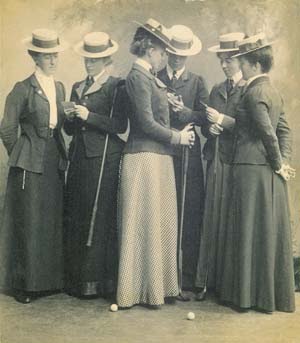
This era saw the end of the bustle and a new trend of wearing longer sleeves became popular. The Victorian corsets created a huge amount of pressure on a womans abdomen, however the health corsets of the Edwardian era were quite efficient in removing this pressure.
The dresses were no more loose fits and thus came up the new fashion of close fitting clothes. Edwardian Jackets and blouses were full in front and often puffed up to form a pigeon breast. Beautiful designs were very often embroidered on the more expensive of jackets. Gold thread was the most popular material for embroidery.
Gorgeously jeweled buttons were added to the front and often the handcuffs of sleeves on these jackets and blouses. Amongst the material used wool and silk formed the more popular ones. Quality was one of the major concerns of the makers in this era and special emphasis was laid on the stitching and material used.
A narrow waist, sloping from the top to bottom usually accompanied these jackets and blouses. A typical high collar was another unique element of an Edwardian dress. High boned collars started being seen on almost every Edwardian womans apparel. Long skirts brushing the floors were another addition to the beauty of this dress.
The growth of this simple pattern of dressing laid the path for popular modern dressing today. Edwardian jackets and blouses are still a craze for many women across the world. The high qualities of these jackets have made their availability a possibility even today.
Edwardian Era Shoes
Edwardian style of shoes made a hallmark style statement. The shoes to be worn differed from the place where one was wearing these shoes. There were varied styles of shoes one could wear. But this age showed a major difference in style from the Victorian times. The shoes of Victorian Era were very formal and dark. Since King Edward was very fond of traveling, there was a gradual introduction of casual shoes which go with the casual attire.
Heavy boots were designed to be worn at workplace or for heavy walking. One can wear it while on business, labor job and when one is traveling. They did not look ugly in anyway. They were often double toned or multi toned at times. The upper half of the boot was white and lower part of a lighter color which contrasted with that color.
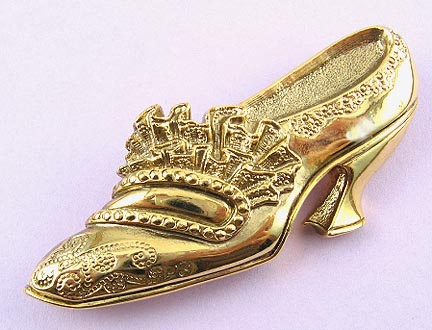
It was more like shoe spats. Laces were attached half way up and then there were hooks and loops for the rest of the height. These shoes have pointed toes and higher arches compared to other shoes of the Victorian Age.
There were also the oxford ranges of shoes which are much popular till date. They looked like the formal shoes men wear today. Just with high arches, pointed ones and were made in monotone or in dual tone. But the concept of multi tone was done away with. In a formal context like work, an Edwardian man would wear PUMPS.
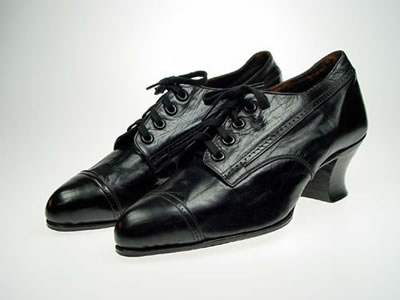
PUMPS men wore look a hybrid variety of shoes stuck between mens and womens shoes. It looked something in between mens oxford shoes and low heeled flats women wore. However these shoes had heels which were adapted from oxford shoes. It had a high arch and thick one to two inch heel.
Edwardian shoes came back in demand in 1960 after Rolling stones re introduced their dressing style reinvented it in the modern way. These shoes were highly popular in the 1960s and were sported with bell bottoms and longish pants which thinned down at the waist.